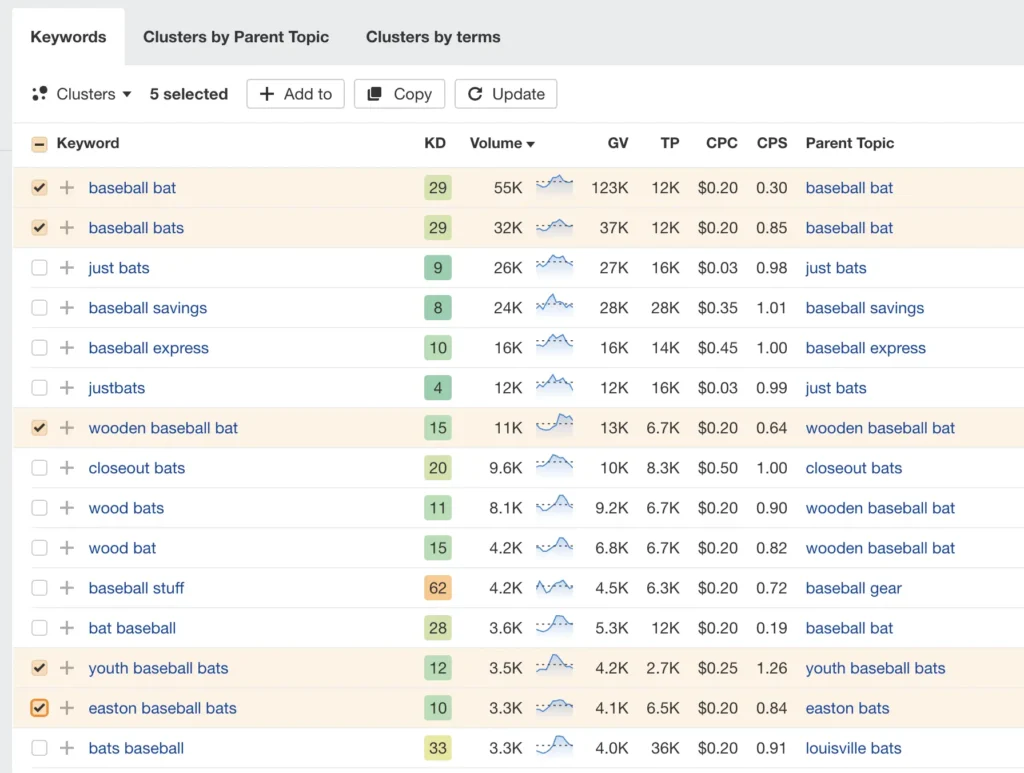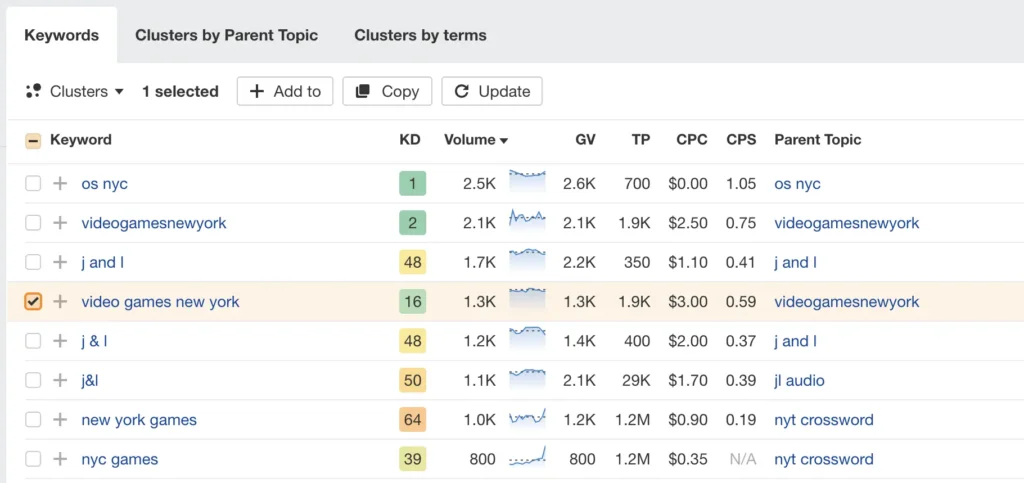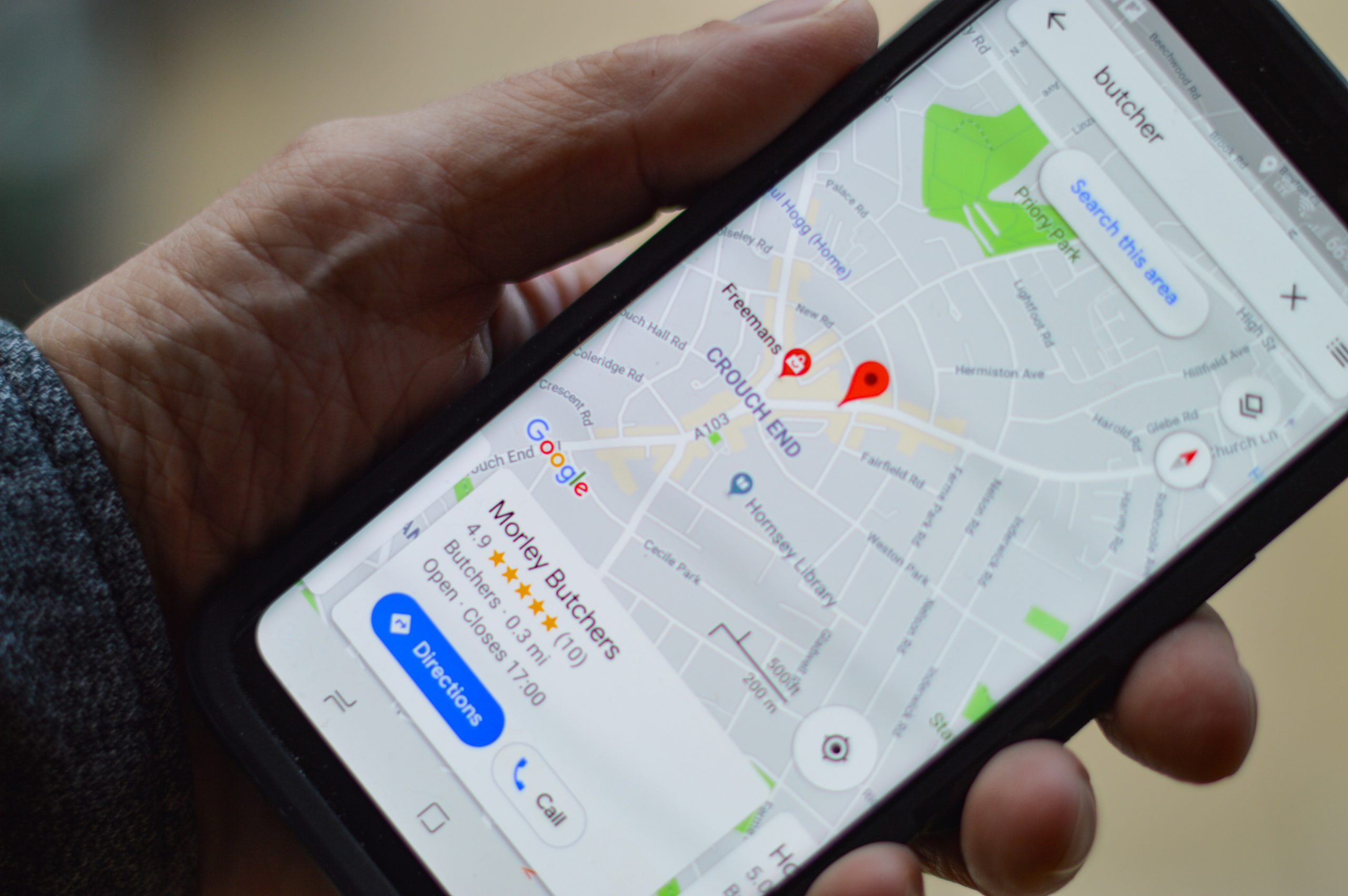GOOGLE ADS MANAGEMENT
ALL SERVICES- GRAPHIC DESIGN & BRANDING
➥ WEBSITE DESIGN TORONTO
➥ TORONTO LOGO DESIGN
➥ BROCHURE GRAPHIC DESIGN
➥ INFOGRAPHIC DESIGN
➥ BUSINESS CARD DESIGN
➥ PACKAGE DESIGN TORONTO
➥ ILLUSTRATION DESIGN
➥ ADVERTISING POSTER DESIGN
➥ BRANDING STRATEGY & SERVICES- ➤ VIEW ALL SERVICES
WEB DEVELOPMENT & SUPPORT
➥ CUSTOM WEB DESIGN TORONTO
➥ ECOMMERCE WEBSITE DESIGN TORONTO
➥ WEBSITE MAINTENANCE SERVICES
➥ SHOPIFY WEBSITE DESIGN
➥ SHOPIFY EXPERTS TORONTO
➥ WORDPRESS DEVELOPMENT
➥ WORDPRESS MAINTENANCE- ➤ VIEW ALL SERVICES
WEBSITE MARKETING & CONTENT
➥ SEO PACKAGES TORONTO
➥ TORONTO SOCIAL MEDIA AGENCY
➥ CONTENT MARKETING TORONTO
➥ PPC MANAGEMENT TORONTO
➥ AFFILIATE MARKETING CANADA
➥ STRATEGIC CONSULTATION- ➤ VIEW ALL SERVICES
ABOUT
RESOURCES- LET’S CHAT
Questions? Call us at
647-348-4995

GOOGLE ADS MANAGEMENT
ALL SERVICES- GRAPHIC DESIGN & BRANDING
➥ WEBSITE DESIGN TORONTO
➥ TORONTO LOGO DESIGN
➥ BROCHURE GRAPHIC DESIGN
➥ INFOGRAPHIC DESIGN
➥ BUSINESS CARD DESIGN
➥ PACKAGE DESIGN TORONTO
➥ ILLUSTRATION DESIGN
➥ ADVERTISING POSTER DESIGN
➥ BRANDING STRATEGY & SERVICES- ➤ VIEW ALL SERVICES
WEB DEVELOPMENT & SUPPORT
➥ CUSTOM WEB DESIGN TORONTO
➥ ECOMMERCE WEBSITE DESIGN TORONTO
➥ WEBSITE MAINTENANCE SERVICES
➥ SHOPIFY WEBSITE DESIGN
➥ SHOPIFY EXPERTS TORONTO
➥ WORDPRESS DEVELOPMENT
➥ WORDPRESS MAINTENANCE- ➤ VIEW ALL SERVICES
WEBSITE MARKETING & CONTENT
➥ SEO PACKAGES TORONTO
➥ TORONTO SOCIAL MEDIA AGENCY
➥ CONTENT MARKETING TORONTO
➥ PPC MANAGEMENT TORONTO
➥ AFFILIATE MARKETING CANADA
➥ STRATEGIC CONSULTATION- ➤ VIEW ALL SERVICES
ABOUT
RESOURCES- LET’S CHAT
Questions? Call us at
647-348-4995

GOOGLE ADS MANAGEMENT
ALL SERVICES- GRAPHIC DESIGN & BRANDING
➥ WEBSITE DESIGN TORONTO
➥ TORONTO LOGO DESIGN
➥ BROCHURE GRAPHIC DESIGN
➥ INFOGRAPHIC DESIGN
➥ BUSINESS CARD DESIGN
➥ PACKAGE DESIGN TORONTO
➥ ILLUSTRATION DESIGN
➥ ADVERTISING POSTER DESIGN
➥ BRANDING STRATEGY & SERVICES- ➤ VIEW ALL SERVICES
WEB DEVELOPMENT & SUPPORT
➥ CUSTOM WEB DESIGN TORONTO
➥ ECOMMERCE WEBSITE DESIGN TORONTO
➥ WEBSITE MAINTENANCE SERVICES
➥ SHOPIFY WEBSITE DESIGN
➥ SHOPIFY EXPERTS TORONTO
➥ WORDPRESS DEVELOPMENT
➥ WORDPRESS MAINTENANCE- ➤ VIEW ALL SERVICES
WEBSITE MARKETING & CONTENT
➥ SEO PACKAGES TORONTO
➥ TORONTO SOCIAL MEDIA AGENCY
➥ CONTENT MARKETING TORONTO
➥ PPC MANAGEMENT TORONTO
➥ AFFILIATE MARKETING CANADA
➥ STRATEGIC CONSULTATION- ➤ VIEW ALL SERVICES
ABOUT
RESOURCES- LET’S CHAT
Questions? Call us at
647-348-4995

GOOGLE ADS MANAGEMENT
ALL SERVICES- GRAPHIC DESIGN & BRANDING
➥ WEBSITE DESIGN TORONTO
➥ TORONTO LOGO DESIGN
➥ BROCHURE GRAPHIC DESIGN
➥ INFOGRAPHIC DESIGN
➥ BUSINESS CARD DESIGN
➥ PACKAGE DESIGN TORONTO
➥ ILLUSTRATION DESIGN
➥ ADVERTISING POSTER DESIGN
➥ BRANDING STRATEGY & SERVICES- ➤ VIEW ALL SERVICES
WEB DEVELOPMENT & SUPPORT
➥ CUSTOM WEB DESIGN TORONTO
➥ ECOMMERCE WEBSITE DESIGN TORONTO
➥ WEBSITE MAINTENANCE SERVICES
➥ SHOPIFY WEBSITE DESIGN
➥ SHOPIFY EXPERTS TORONTO
➥ WORDPRESS DEVELOPMENT
➥ WORDPRESS MAINTENANCE- ➤ VIEW ALL SERVICES
WEBSITE MARKETING & CONTENT
➥ SEO PACKAGES TORONTO
➥ TORONTO SOCIAL MEDIA AGENCY
➥ CONTENT MARKETING TORONTO
➥ PPC MANAGEMENT TORONTO
➥ AFFILIATE MARKETING CANADA
➥ STRATEGIC CONSULTATION- ➤ VIEW ALL SERVICES
ABOUT
RESOURCES- LET’S CHAT
Questions? Call us at
647-348-4995
![]()
![]()
![]()

- February 27, 2024
-
Liam Hunt
Navigating the competitive retail landscape demands a savvy approach to marketing, with strategies that not only attract attention but convert interest into sales. For retailers and storefronts keen on carving out their niche and boosting their bottom line, understanding the ins and outs of effective retail marketing and advertising is essential.
Given that 81% of retail shoppers start their buying journey with an online search, integrating digital marketing into your sales strategy is not just recommended; it’s essential.
That’s where our expertise comes into play. At Little Dragon Media, we know the ins and outs of retail marketing, e-commerce marketing, and digital advertising to elevate your business to new heights.
Let’s take a look at the essential components of a successful retail marketing strategy, providing you with the tools and techniques to enhance your visibility, engage your target audience, and drive sales growth.
1. Develop Your Initial Online Presence
Enhancing your online presence is more than just setting up a website; it’s about creating a digital storefront that attracts and retains customers. Here are key strategies to amplify your online visibility:
- Website Optimization: Ensure your website is optimized for speed, mobile devices, and search engine optimization (SEO). This includes using relevant keywords, meta descriptions, and alt tags for images. A fast-loading, mobile-friendly web design encourages longer visits and higher conversion rates.
- Content is King: Regularly update your site with high-quality, relevant content. Blog posts, product reviews, and how-to guides not only improve SEO but also position your brand as an authority in your niche. Engaging content can lead to higher traffic and increased customer engagement.
- User Experience (UX): A seamless, intuitive user interface (UI) is crucial. Navigation should be straightforward, with clear calls-to-action (CTAs) and easy-to-find contact information. Enhancing UX leads to improved customer satisfaction and loyalty.
- Visual Appeal: Invest in high-quality imagery and consider incorporating videos to showcase your products or services. Visuals can dramatically improve the appeal of your website, making it more engaging and professional.
| Strategy | Details |
|---|---|
| Website Optimization | Speed and mobile responsiveness, SEO-friendly. |
| Content Creation | Regular updates with blogs, reviews, guides. |
| User Experience | Intuitive UI, straightforward navigation, clear CTAs. |
| Visual Elements | High-quality images and videos. |
By focusing on these core areas, you can significantly enhance your online presence, making your digital storefront a powerful tool for attracting and engaging prospective customers.
2. Start Developing an SEO Strategy
Search engine optimization (SEO) is an essential pillar of any retail marketing strategy. Although it can take a lot of time and effort to get it off the ground, it pays dividends in the long-run as a successful SEO campaign brings in passive, organic web traffic for web pages that target popular keywords on Google, Bing, and Yahoo.
While any kind of retailer can benefit from an SEO strategy, it’s particularly important for e-commerce retailers. For e-commerce, 43% of all traffic comes from a Google Search query.
Below is a high-level overview of each component of an SEO strategy and, later on, we will take a closer look at each of them.
| Strategy Component | Implementation |
|---|---|
| Keyword Research | Identify and target specific keywords related to your products/services. |
| On-Page SEO | Optimize page titles, meta descriptions, and content for target keywords. |
| Content Optimization | Create high-quality, keyword-rich content that adds value to your audience. |
| Backlink Strategy | Build high-quality backlinks from reputable sites within your industry. |
| Local SEO | Optimize for local search queries and ensure your business is listed on local directories. |
Incorporating these elements into your SEO strategy can significantly improve your online visibility, making it easier for potential customers to find and engage with your brand.
(Need a hand with your retail SEO marketing campaign? Leave it to our search engine experts at Little Dragon Media to get the job done right.)
3. Refine Your Keyword Research
Building and refining a keyword research campaign is a foundational step for any retailer looking to improve their online visibility. A well-crafted keyword strategy allows you to target potential customers who are searching for products or services you offer. Here’s how to build and refine your campaign using keyword research tools such as Moz, SEMrush, or Ahrefs.
Step 1: Brainstorm Initial Keywords
Start with brainstorming a list of basic keywords related to your products or services. Think about what potential customers might type into a search engine when looking for your offerings. For instance, if you’re a sporting goods retailer, you might want to consider the following keywords as a starting point:
- Best running shoes for flat feet
- Affordable hiking gear online
- High-quality yoga mats for beginners
- Waterproof camping equipment
- Lightweight backpacks for trekking
Notice how these are generally quite specific. In SEO, the more niche the better. Instead of trying to capture highly competitive search traffic for “best running shoes”, you’re better off trying to compete for less competitive search terms that offer a higher likelihood of ranking on the first search engine results page (SERP).
Step 2: Select a Keyword Research Tool
Although we mentioned several keyword research software tools above, we prefer using Ahrefs. It has a clean and intuitive interface that makes keyword research simple for beginners.
Ahrefs is a powerful tool that allows you to explore not just keyword ideas but also analyze your competition. Enter your initial keywords into Ahrefs’ Keyword Explorer to generate a list of related keywords, along with valuable metrics such as search volume, keyword difficulty, and click-through rates.
The key is to select “unicorn” keywords that have low keyword difficulty (KD) scores, while generating high amounts of search traffic (Volume).
Step 3: Analyze Competitors
With Ahrefs, you can also see what keywords your competitors are ranking for. This insight can help you identify gaps in your own strategy or uncover new keyword opportunities.
Step 4: Refine Your List
Based on your findings, refine your keyword list by selecting those with a good balance of search volume and competition level. Prioritize keywords that are most relevant to your business and have a higher likelihood of converting.
Step 5: Continuously Monitor and Adjust
Keyword trends can change over time, so it’s important to continuously monitor your chosen keywords’ performance. Ahrefs provides tools to track your rankings and see how changes in your SEO strategy impact your visibility.
Below, I’ve shared a screenshot from my Ahrefs Keyword Explorer dashboard, identifying several content topics that have a high probability of ranking on the first SERP.

Highlighted keyword opportunities for a retailer selling baseball bats.
These keywords are excellent for a baseball equipment and apparel retailer because they have low KD scores (<30) while also generating sizable monthly search traffic (3.5K to 55K).
4. For Physical Storefronts, Focus on Local SEO
These days, many retailers focus on e-commerce to drive sales, with 19% of all retail sales now deriving from e-commerce. Physical brick-and-mortar storefronts, however, should focus on developing a “local SEO” strategy to drive more customers through their doors.
Local SEO is a strategy tailored to optimize a website to appear in local search results. This approach focuses on enhancing a business’s visibility for local customers within a specific geographic area. It involves optimizing the business’s online presence through claiming and managing local listings on Google My Business and other directories, optimizing the website content and metadata with local keywords, and ensuring accurate and consistent business information (name, address, phone number) across the web.
Local SEO also emphasizes customer reviews and localized content creation to attract and engage a local audience. The goal is to ensure that when potential customers search for relevant products or services in their area, the business appears prominently in search results, thereby increasing the likelihood of attracting foot traffic and local sales.

A local SEO keyword opportunity for an electronics or video game retailer in New York
Above, I’ve highlighted a great local SEO keyword that has a low KD score (16) while still generating significant monthly search traffic (1.3K searches). A well-written and optimized piece of content targeting this keyword has a high probability of landing on the first SERP, and capturing a sizable share of the total search volume.
(Want to learn more about local SEO for your retail store? Book a consultation with our local SEO experts.)
5. Leverage Social Media Platforms
In today’s digital era, leveraging social media platforms is non-negotiable for retailers looking to thrive. It’s a dynamic way to connect with your audience, showcase your products, and build brand loyalty. Here’s how to make the most of social media for your retail business:
- Identify the Right Platforms: Different products and demographics resonate on different platforms. Fashion and lifestyle brands may find Instagram and Pinterest beneficial for their visually appealing content, while a tech gadget store might see more engagement on Twitter and Facebook.
- Engage with Your Audience: Social media is a two-way street. Beyond posting about your products or sales, engage with your followers by responding to comments, creating polls, and sharing user-generated content. This interaction not only builds a community around your brand but also gives you insight into your customers’ preferences.
- Use High-Quality Visuals: Social media is increasingly visual. Use high-quality photos and videos to showcase your products. Consider lifestyle shots that show your products in use, which can help potential customers visualize them in their own lives. Tools like Canva and Adobe Spark make it easy to create professional-looking visuals.
- Run Targeted Ads: Social media platforms offer powerful retail advertising tools that allow you to reach specific demographics, interests, and behaviors. Use these tools to run pay-per-click ads that are relevant to your target audience.
- Promote Exclusive Deals: Create social media-specific promotions to encourage your followers to keep an eye on your profiles. Flash sales, promo codes, and early access to new products can incentivize engagement and drive sales.
Incorporating these tips can help you build a strong social media presence that supports your retail marketing strategy, engages your audience, and drives sales. Remember, consistency is key. Regular posting, interaction, and adaptation based on performance analytics can help you grow your social media channels and, by extension, your business.
6. Implement Customer Loyalty Programs
Customer loyalty programs are a powerful tool for retailers aiming to retain customers and encourage repeat business. It’s no wonder why more than 90% of retailers currently have some kind of loyalty program for repeat customers.
These programs reward customers for their continued patronage, offering incentives that can range from discounts to exclusive access to new products. Implementing an effective loyalty program involves a few key steps:
- Understand Your Customers: Before launching a loyalty program, it’s crucial to understand what motivates your customers. Are they more inclined towards discounts, exclusive products, or perhaps experiences? This understanding will guide the structure of your loyalty program.
- Choose the Right Rewards: The rewards should align with your customers’ interests and your business goals. For example, a points system where customers earn points for every purchase that can be redeemed for discounts, products, or services can be very effective.
- Promote Your Program: Make sure your customers know about your loyalty program. Promote it through your website, social media, email marketing, and in-store signage. Educate your staff so they can inform customers and answer questions.
- Leverage Technology: Use technology to track customer purchases and reward redemptions. Many point-of-sale systems now offer integrated loyalty program features, or you can use specialized software. This makes it easier to manage the program and provides valuable data on customer behavior.
- Regularly Evaluate and Adapt: Keep an eye on how your loyalty program is performing and be ready to make adjustments. This could mean changing the rewards, how points are earned, or other program features to keep your customers engaged and motivated.
Key Components of a Successful Customer Loyalty Program:
- Personalized rewards that match customer preferences
- Easy enrollment process
- Clear communication about how the program works and the benefits
- Regular updates and promotions to keep the program engaging
- Data-driven adjustments based on customer feedback and program performance
Implementing a customer loyalty program can significantly enhance customer satisfaction and loyalty, leading to increased sales and a stronger brand. By offering tangible rewards for repeat purchases, you not only incentivize customers to return but also to become advocates for your brand, sharing their positive experiences with others.
7. Optimize Store Layout and Design
Optimizing your store’s layout and design is crucial for creating an inviting atmosphere that enhances the customer shopping experience. A well-thought-out layout helps customers navigate your store effortlessly, leading them to discover products they might not have initially sought out. Here are steps to consider when optimizing your store’s layout:
- Understand Customer Flow: The way customers move through your space is essential. You want to guide them naturally through the store, ensuring they encounter key displays and merchandise. Analyze foot traffic patterns to design a layout that flows logically and encourages exploration.
- Create Engaging Displays: Use your store’s layout to create engaging and interactive displays. Highlight new arrivals, bestsellers, or promotional items in areas with the highest visibility and foot traffic.
- Zone Your Store: Organize your store into clear zones based on product categories or themes. This not only makes it easier for customers to find what they’re looking for but also encourages the discovery of new products.
- Consider the Decompression Zone: The area immediately inside the entrance, known as the decompression zone, is where customers adjust to the new environment. Keep this area open and inviting, free from clutter and overwhelming displays.
- Use Lighting Strategically: Lighting can significantly impact the shopping experience. Use a mix of ambient, task, and accent lighting to highlight products.
- Prioritize Accessibility: Ensure your store is accessible to everyone, including people with disabilities. This includes wide aisles, accessible shelves, and clear signage.
- Refresh Your Design Regularly: Regular updates to your store’s design keep the shopping experience fresh and exciting for repeat customers.
Key Components for Optimizing Store Layout and Design
| Component | Description |
|---|---|
| Customer Flow | Analyze and design for natural movement through the store. |
| Engaging Displays | Highlight key products in high-traffic areas. |
| Zoning | Organize store into clear, thematic or category-based zones. |
| Decompression Zone | Keep entrance inviting and uncluttered. |
| Lighting | Use different types of lighting to enhance product visibility and mood. |
| Accessibility | Ensure store is navigable and comfortable for all customers. |
| Regular Updates | Refresh design elements periodically to maintain interest. |
By focusing on these elements, marketing retailers can create an environment that not only maximizes sales potential but also provides a pleasant and memorable shopping experience for customers.
8. Focus on Customer Service Excellence
Outstanding customer service can set your business apart and build lasting loyalty. Ensuring every customer interaction is positive is crucial, whether it’s in-store, online, or through social media channels. Here are key strategies to elevate your customer service:
- Retrain Your Staff: Invest in comprehensive training programs to ensure your staff is knowledgeable, friendly, and equipped to handle various customer inquiries and concerns. Emphasize the importance of empathy and active listening.
- Personalize the Experience: Use customer data to offer personalized shopping experiences. Address customers by name, recommend products based on past purchases, and remember their preferences.
- Feedback Loops: Implement systems to gather and act on customer feedback. Whether it’s through surveys, comment cards, or social media, listening to your customers can provide invaluable insights for improvement.
- Resolve Issues Quickly: Ensure your team is empowered to resolve customer issues promptly. A swift and satisfactory resolution can turn a potentially negative experience into a positive one.
- Omnichannel Support: Provide consistent customer service across all platforms. Whether a customer contacts you through email, phone, or social media, the quality of service should be uniform.
By prioritizing customer service excellence, retailers can not only increase customer satisfaction but also encourage repeat business and word-of-mouth recommendations, crucial elements for long-term success.
9. Host In-Store Events
Hosting in-person events is a powerful strategy to engage directly with your customers, creating memorable experiences that can foster community, loyalty, and enhance your brand visibility.
Whether it’s product launches, workshops, or exclusive sales, these events can significantly contribute to your retail marketing efforts. Here’s how to effectively plan and execute successful in-person events:
| Step | Description |
|---|---|
| Identify Your Goals | Define what you want to achieve with your event (e.g., product awareness, customer engagement). |
| Choose the Right Type of Event | Decide on the format that best suits your goals, such as workshops, meet-and-greets, or product demonstrations. |
| Plan Logistics | Select a date, time, and venue that will maximize attendance and enhance the experience. |
| Promote Your Event | Utilize your marketing channels (social media, email, in-store signage) to spread the word. |
| Engage Attendees | Create interactive elements that encourage participation and sharing on social media. |
| Follow Up | After the event, reach out to attendees with a thank you, additional information, or exclusive offers to maintain engagement. |
By carefully planning and executing in-person events, retailers can create an immersive brand experience that not only delights existing customers but also attracts new ones, thereby enhancing their overall retail marketing strategy.
Wrapping It Up: Revamp Your Retail Marketing
Standing out requires more than just offering great products; it demands a marketing strategy that resonates with your audience, builds lasting relationships, and creates an unforgettable shopping experience.
From leveraging the power of social media to implementing customer loyalty programs, local SEO, and more, your retail marketing strategy can play a pivotal role in the success of your retail business.
Remember, retail marketing success lies in understanding your customers and continuously adapting to their evolving needs and preferences. By integrating these tips into your retail marketing strategy, you’re not just aiming to sell products; you’re striving to build a community around your brand that values experiences, engagement, and excellence.
To guarantee a winning retail marketing strategy, consider hiring our team of award-winning retail marketing experts today.
Liam Hunt, M.A., is a writer and digital marketing specialist whose writing has appeared in the Vancouver Sun, Asia Times, and US News and World Report.
RECENT POSTS
- SCAM ALERT: How a Fake Google Ads Inquiry Nearly Got Us (And How to Protect Yourself)
- Google My Business: 9 Tips to Ensure Your GMB profile Stands Out in the Map Pack
- 8 Outdated Logo Design Trends That Are Making Your Business Look Bad
- How We the North Became the Toronto Raptors’ Rallying Cry
- Is A Dedicated IP For SEO A Myth Or Reality? – 13 Experts Weigh In

Ready to chat about how Little Dragon Media can enhance your business?
Call us now at 647-348-4995 or

OUR AWARDS & CERTIFICATIONS






WHAT OUR CLIENTS ARE SAYING



Little Dragon Media's professionalism and commitment to delivering excellence are truly commendable. I highly recommend their services... Thank you for your stellar work!
- Delna Bharucha

Little Dragon Media worked on developing our logo and website. They did an absolutely AMAZING job on both projects. These guys ROCK and you won't be disappointed.
- Sonia Nutt

My team had a great experience working with Little Dragon Media. We will certainly engage with Little Dragon Media for any additional projects in the future. Highly recommend!
- Carly Rooney



- 682A St-Clair West Toronto, ON M6C 1B1
- (647)-348-4995
- info@littledragon.ca
MOST POPULAR SERVICES
RECENT POSTS
GET MORE CLIENTS
Don't let your competitors take over. We'll help you climb to the top and get more clients.



- 682A St-Clair West Toronto, ON M6C1B1
- (647)-348-4995
- info@littledragon.ca
MOST POPULAR SERVICES
RECENT POSTS
GET MORE CLIENTS
Don't let your competitors take over. We'll help you climb to the top and get more clients.

Contact | Press Mentions | Privacy Policy | Terms of Service
© 2024 Little Dragon Media. All Rights Reserved.






